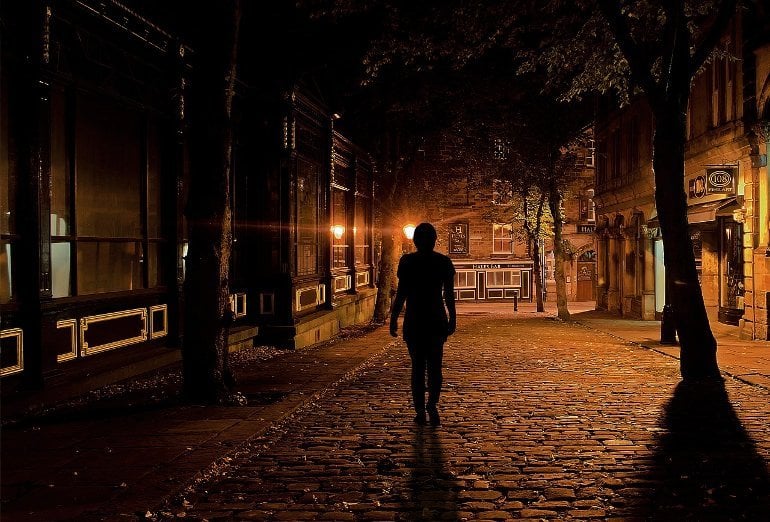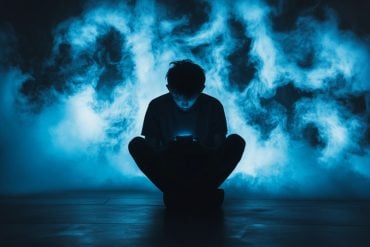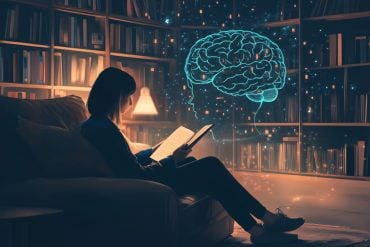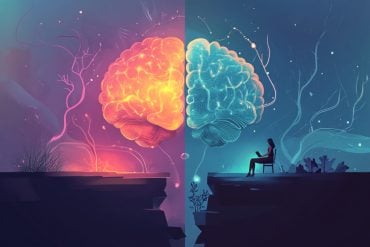Summary: Researchers explain the neuroscience behind why we sometimes feel the presence of another when we are alone in an empty room.
Source: The Conversation
If you’ve ever had the eerie sensation there’s a presence in the room when you were sure you were alone, you may be reluctant to admit it. Perhaps it was a profound experience that you are happy to share with others. Or – more likely – it was something in between the two.
Unless you had an explanation to help you process the experience, most people will struggle to grasp what happened to them. But now research is showing this ethereal experience is something we can understand, using scientific models of the mind, the body, and the relationship between the two.
One of the largest studies on the topic was carried out as long ago as 1894. The Society for Psychical Research (SPR) published their Census of Hallucinations, a survey of more than 17,000 people in the UK, US and Europe.
The survey aimed to understand how common it was for people to have seemingly impossible visitations that foretold death. The SPR concluded that such experiences happened too often to be down to chance (one in every 43 people that were surveyed).
In 1886, the SPR (which numbered former UK prime minister William Gladstone and poet Alfred, Lord Tennyson among its patrons) published Phantasms of the Living. This collection included 701 cases of telepathy, premonitions and other unusual phenomena. For instance, the Reverend P H Newnham, of Devonport in Plymouth, told the story of a visit to New Zealand, where a night-time presence warned him away from joining a boat trip at dawn the next morning. He later learnt that all on the voyage had drowned.
At the time, phantasms was criticised for being unscientific. The census was received with less scepticism, but it still suffered from response bias (who would bother responding to such a survey except those with something to say). But such experiences live on in homes across the world, and contemporary science offers ideas for understanding them.
Not such sweet dreams
Many of the accounts SPR collected sound like hypnagogia: hallucinatory experiences that happen on the boundaries of sleep. It has been suggested that several religious experiences recorded in the 19th century have a basis in hypnagogia.
Presences have a particularly strong link with sleep paralysis, experienced by around 7% of adults at least once in their life. In sleep paralysis our muscles remain frozen as a hangover from REM sleep, but our mind is active and awake. Studies have suggested more than 50% of people with sleep paralysis report encountering a presence.
While the Victorian presences documented by the SPR were often benign or comforting, modern examples of presence triggered by sleep paralysis tend to exude malevolence. Societies around the world have their own stories about nighttime presences – from the Portuguese “little friar with the pierced hand” (Fradinho da Mao Furada) who could infiltrate people’s dreams, to the Ogun Oru of the Yoruba people in Nigeria, which was believed to be a product of victims being bewitched.
But why would an experience such as paralysis create a feeling of presence? Some researchers have focused on the specific characteristics of waking up in such an unusual situation. Most people find sleep paralysis scary, even without hallucinations. In 2007, sleep researchers J. Allen Cheyne and Todd Girard argued that if we wake paralysed and vulnerable, our instincts would make us feel threatened and our mind fills in the gap. If we are prey, there must be a predator.
Another approach is to look at the commonalities between visitations in sleep paralysis and other types of felt presence. Research over the past 25 years has shown presences are not only a regular part of the hypnagogic landscape, but also reported in Parkinson’s disease, psychosis, near-death experiences and bereavement. This suggests that it’s unlikely to be a sleep-specific phenomenon.
Mind-body connection
We know from neurological case studies and brain stimulation experiments that presences can be provoked by bodily cues. For example, in 2006 neurologist Shahar Arzy and colleagues were able to create a “shadow figure” that was experienced by a woman whose brain was being electrically stimulated in the left temporoparietal junction (TPJ). The figure seemed to mirror the woman’s body position – and the TPJ combines information about our senses and our bodies.
A series of experiments in 2014 also showed that disrupting people’s sensory expectations seems to induce a feeling of presence in some healthy people. The way the procedure the researchers used works is to trick you into feeling as if you are touching your own back, by synchronising your movements with a robot directly behind you.

Our brains make sense of the synchronisation by inferring that we are producing that sensation. Then, when that synchronisation is disrupted – by making the robot touches slightly out of sync – people can suddenly feel like another person is present: a ghost in the machine. Changing the sensory expectations of the situation induces something like a hallucination.
That logic could also apply to a situation like sleep paralysis. All our usual information about our bodies and senses is disrupted in that context, so it’s perhaps no surprise that we may feel like there is something “other” there with us. We might feel like it’s another presence, but really, it’s us.
In my own research in 2022, I tried to trace the similarities in presences from clinical accounts, spiritual practice and endurance sports (which are well known for producing a range of hallucinatory phenomena, including presence).
In all of these situations, many aspects of the feeling of a presence were very similar: for example, the subject felt that the presence was directly behind them. Sleep-related presences were described by all three groups, but so were presences driven by emotional factors, such as grief and bereavement.
Despite its century-old origins, the science of felt presence has really only just begun. In the end, scientific research may give us one over-arching explanation, or we may need several theories to account for all these examples of presence. But the encounters people described in Phantasms of the Living aren’t phantoms of a bygone age. If you’re yet to have this unsettling experience, you probably know someone who has.
About this psychology research news
Author: Ben Alderson-Day
Source: The Conversation
Contact: Ben Alderson-Day – The Conversation
Image: The image is in the public domain







